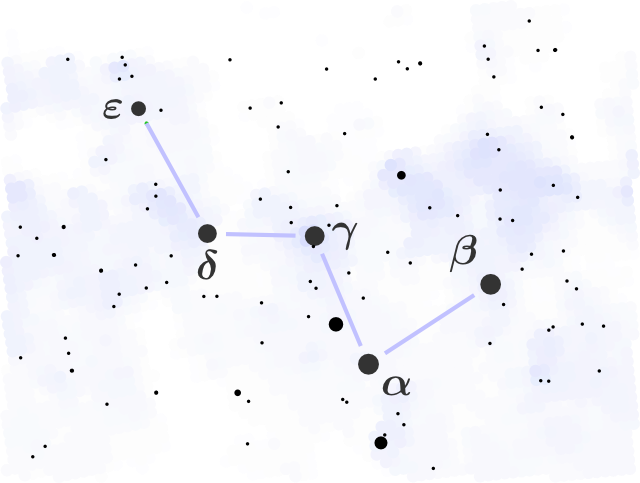
I am not really an astronomer or an astrophysicist (my expertise and interest is in the areas of nuclear and particle physics) but I will make an exception for the constellation of Cassiopeia.

The term “constellation” refers to a region of sky, so the constellation of Cassiopeia technically contains hundreds of stars, but what most people think of as Cassiopeia is the stretched ‘W’ shape made by the five brightest stars.
Alpha Cassiopeiae (α Cas, Schedar) is a cool (4500 K) orange giant star located 229 light-years from Earth. It is the brightest of the stars in Cassiopeia.
Beta Cassiopeiae (β Cas, Caph) is a warm (7100 K) yellow-white giant variable binary star 54.5 light-years from Earth. It is the second brightest of the stars in Cassiopeia and varies in apparent magnitude (brightness) between +2.25 to +2.31.
Gamma Cassiopeiae (γ Cas, Tsih) is a hot (31 000 K) blue subgiant eruptive variable binary star, the prototype of the shell type of variable stars. It is by far the most powerful of the stars in Cassiopeia but only the third brightest* as it is located 613 light-years from Earth. Gus Grissom, an astronaut who took part in Mercury and Gemini missions and who died in the Apollo 1 accident named the star “Navi”, after his middle name backwards, as the star was commonly used as a navigational aid during space missions.
Delta Cassiopeiae (δ Cas, Ruchbah) is a warm (8400 K) blue-white star, part of an eclipsing binary system. It is located 99.4 light-years from Earth.
Epsilon Cassiopeiae (ε Cas, Segin) is a hot (15 200 K) blue-white giant star and is the dimmest of the five, at a distance of 442 light-years from Earth.
Cassiopeia also contains some other interesting stuff: ρ Cassiopeiae and V509 Cassiopeiae are yellow hypergiants and two of the most luminous stars in the Milky Way, with ρ Cas being more than ninety million times the size of the Sun and around half a million times more powerful. Cassiopeia A is a the remnant of a supernova that occurred 300 years ago and the brightest source of radio waves outside of our own Sun. Cassiopeia also contains the Pacman nebula and two Messier objects, M52 and M103, both of which are open clusters visible from Earth with binoculars.
* The brightness of γ Cas varies irregularly but when it is at its brightest, with an apparent magntiude of +3.40, it is the brightest star in Cassiopeia.
this information helped a lot but it would be helpful for the luminosity compared to our sun
How lazy are you?
hahahaaha ^